Roaming Abroad: How Do Prices for Mobile Internet Different in Europe?
Hi, Geektimes!
In this publication, we decided to compare the tariff plans for mobile Internet in the EU countries and the UK, just before the holiday season. We decided to touch on this topic for a reason: using special magic ( about which later ), the Mishiko tracker for dogs works in 170 countries around the world without additional charges for roaming. So who, if not us, should understand the pricing policy of European operators (and Russian ones in roaming!).
We compared the prices for mobile Internet when buying a local SIM, a special global SIM, and when paying for the services of Russian operators in roaming. Screenshot for attracting attention: the cost of 1 MB of mobile Internet in Slovakia when roaming with Yota is ... 790 rubles:
')
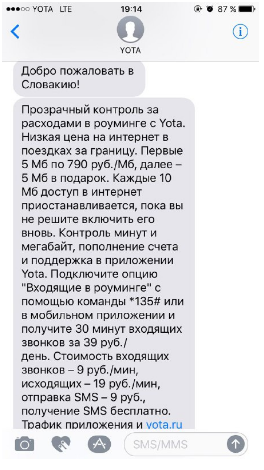
But first things first.
The first thing you need to know about mobile Internet in Europe is that you don’t need to use it with Russian operators. Or every megabyte will be expensive.
See for yourself:

A screenshot from the preview of the post did not originate from scratch. When we tested our tracker Mishiko in Europe, we used the Yota sim card on our smartphone. And if in Hungary the operator’s tariff was really 20 rubles per megabyte, then crossing the border of Slovakia, the declared tariff turned into a pumpkin (you need to carefully read all the asterisks in the tariffs):
Once again: 790 rubles for each megabyte used. We had about 1000 rubles on the account, and at the time of automatic checking of mail on the iPhone, FB and Telegram updates, the whole thousand burned down in about 20 seconds (thanks to LTE). As it turned out, such brutal tariffs Yota also applies to Monaco, Andorra and Switzerland.
Conclusion: despite the stated tariffs, when using Russian operators in roaming, be vigilant. And the captain of evidence suggests that it is better not to use Russian operators abroad at all.
What you need to know before buying a separate SIM for foreign travel:
1. The intermediary for the sale of foreign sims will have to believe "the word", pay the commission and send a scan of their passport
Alas, a foreign sim card in Russia can only be bought on the eerie-looking intermediary sites (either with home delivery or by self-pickup). When ordering, you must enter the main information about yourself, as well as upload a passport scan to the site (you cannot activate the SIM card without transferring the passport data to the operator ).
Intermediaries in this case guarantee the protection and security of personal data, but only in words . If you want a little more guarantees, you can at least check their legal entity in the Register of operators engaged in the processing of personal data from the "beloved" by all Roskomnadzor. Do you need such confirmation to send a scan of your passport - a good question, the answer to which is yours.
2. The mediator will take a commission for his services (which is on average 10-20 euros). And if you run into the scam site, you will lose the entire cost of a sim card - usually, 20-40 euros.
Of course, since we decided to publish this article in our blog, we could not help telling you how Mishiko dog tracker works in Europe (and not only in it).
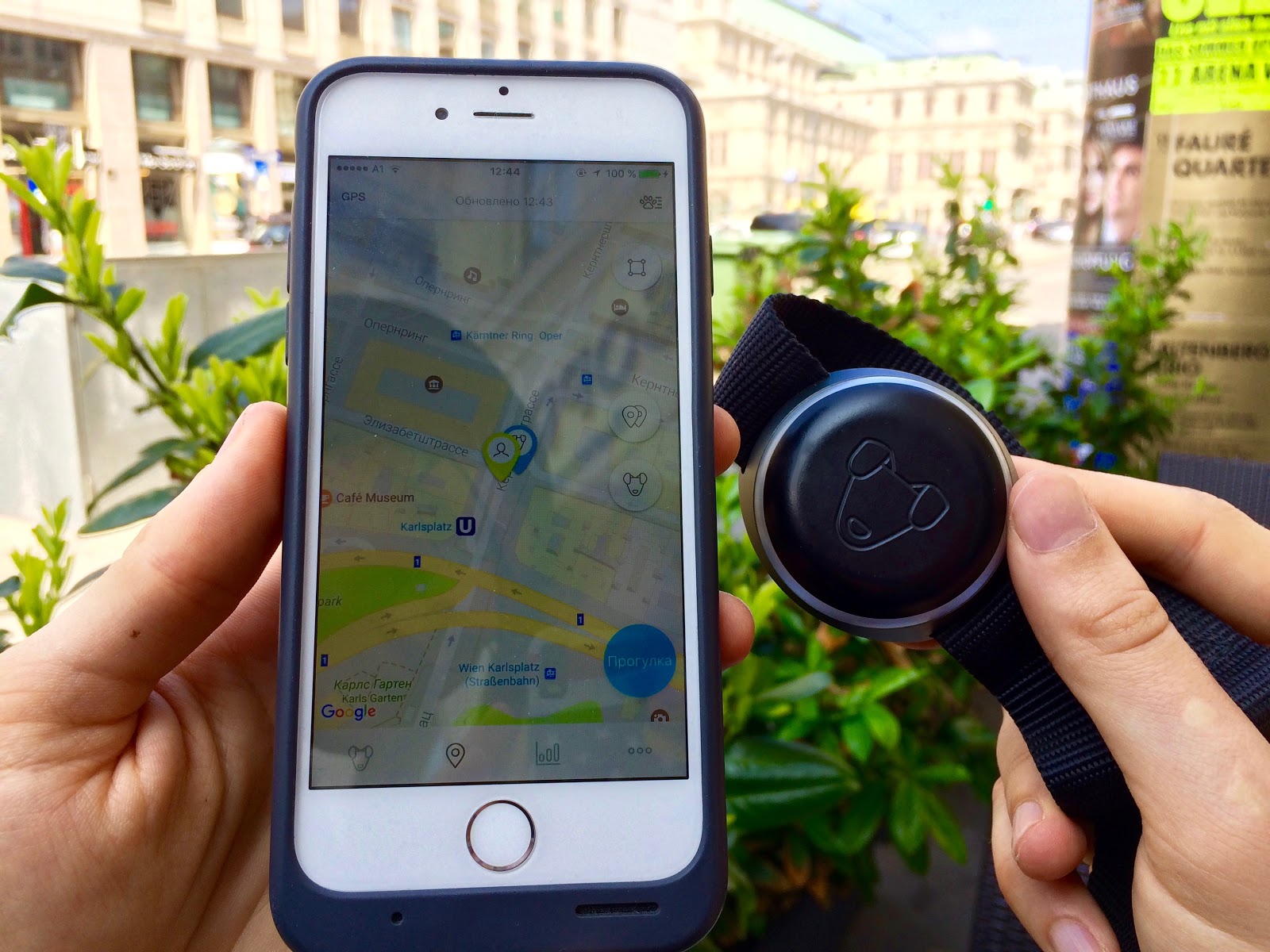
Picture to attract attention: Mishiko shows a GPS location in Vienna near the Karlsplatz metro station. An interesting nuance: the phone itself is connected to the Internet via Wi-Fi, and Mishiko uses the 3G network.
The chip of Mishiko is that the tracker works without any additional charges for roaming in 170 countries of the world (including the whole of Europe, Russia and the USA).
How? Thanks to the special conditions that Mishiko concluded with the operator T-Mobile. The European operator agreed to meet Mishiko for a reason. The device uses not a removable SIM card that could be used in your smartphone, but a SIM chip. It is soldered directly to the board and looks compared to a sim card like this:
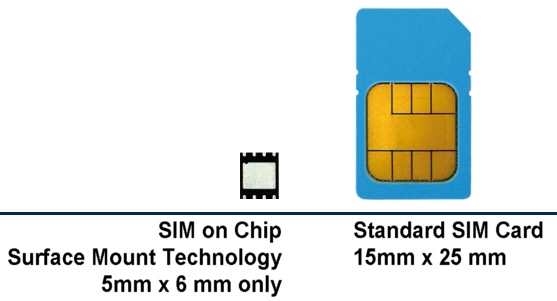
It is clear that hardly anyone will begin to solder the SIM-chip and try to use it somewhere else.
The second restriction is that in the Mishiko tariff, voice calls are basically disabled, and the own platform controls the traffic consumption, and the entire Internet “collapses” for Mishiko only with our server. So, use the SIM card for foreign resources will not work.
By a similar principle, unlimited and free mobile 3G Internet is used in the Amazon Kindle.
Ok, with Mishiko is understandable. Let's return to the tariffs.
If before the trip, I still decided to buy a local (or global) SIM. What's next?
TL; DR: popular fares for traveling in Europe in one table:
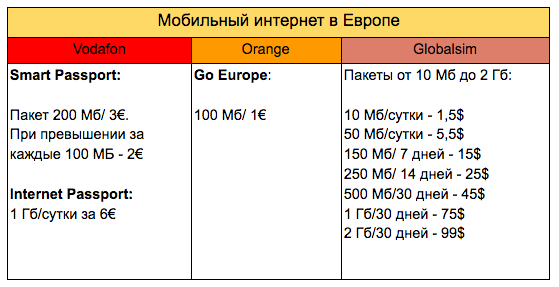
Before examining all the data we found, we would like to warn you that starting June 15, 2017, the EU plans to cancel roaming. Generally throughout Europe. The European Union also announced a consistent reduction in the payment of mobile Internet traffic within the EU from 7.7 euros per gigabyte in 2017 to 2.5 euros per gigabyte in 2022. This will greatly simplify the lives of tourists who will use local sims in European countries. cards.
Already today in Europe there are several mobile operators that operate on the same tariff plan for many European countries. These include Orange with the Go Europe, Vodafone (with Smart Passport and Internet Passport) and Globalsim fares . You can buy Orange and Vodafone cards from intermediaries (they deliver a SIM card by mail, so if you need it tomorrow, it’s better to buy it on the spot). Similarly, with intermediaries - by mail, or in the offices of travel agencies - you can buy Globalsim.
If you want to be able to distribute Wi-Fi to other devices, you should study the tariffs in more detail: for example, from Vodafone this is already possible only on the more expensive Internet Passport tariff for 6 euros per day (against 3 euros per day on Smart Passport tariff).
Let us examine in more detail the conditions for tourist sims.
This SIM card works in 36 countries of Europe with one tariff plan:
And here is a list of countries for which you can safely buy this SIM card:

For individual countries, for example, Spain, the Orange SIM card works with its own tariff. The Spaniards have Mundo: a 500Mb (6 €) package, 1GB (9 €) or 2GB (15 €) of the mobile Internet for 30 days. The cost of the Internet without connected packages is € 0.50 per 10 MB of Internet traffic.
The Vodafone card offers a package of services starting at € 3 per day:
In some countries in Europe there are cheaper offers: for example, in Hungary there are Magyar Telekom (T-mobile) and Telenor, which offers monthly rates for even lower prices.
Buying a local SIM card is not a big deal: there are offices of mobile operators in major cities of Hungary (Budapest, Heviz, Sarvar, Bukfurdo, Hajdusoboslo). To purchase, you must have a passport with you (for signing a contract) and money (about 2500 forints - 8 €). On-site operator will help you activate the SIM card, connect the necessary package of services and tell you everything you need.
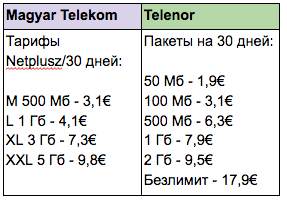
In the UK today there are 4 mobile operators:

SIM cards can be bought directly in the UK, on official websites, as well as in stores, supermarkets, post offices, mobile operator shops, and so on. You can recharge SIM cards with a credit or debit bank card.
What do you do when traveling in Europe? Are you buying a local sim card on the spot? Order in Russia? Or use global sim?
In this publication, we decided to compare the tariff plans for mobile Internet in the EU countries and the UK, just before the holiday season. We decided to touch on this topic for a reason: using special magic ( about which later ), the Mishiko tracker for dogs works in 170 countries around the world without additional charges for roaming. So who, if not us, should understand the pricing policy of European operators (and Russian ones in roaming!).
We compared the prices for mobile Internet when buying a local SIM, a special global SIM, and when paying for the services of Russian operators in roaming. Screenshot for attracting attention: the cost of 1 MB of mobile Internet in Slovakia when roaming with Yota is ... 790 rubles:
')

But first things first.
The first thing you need to know about mobile Internet in Europe is that you don’t need to use it with Russian operators. Or every megabyte will be expensive.
Very expensive.
Fabulously expensive
See for yourself:

A screenshot from the preview of the post did not originate from scratch. When we tested our tracker Mishiko in Europe, we used the Yota sim card on our smartphone. And if in Hungary the operator’s tariff was really 20 rubles per megabyte, then crossing the border of Slovakia, the declared tariff turned into a pumpkin (you need to carefully read all the asterisks in the tariffs):
Once again: 790 rubles for each megabyte used. We had about 1000 rubles on the account, and at the time of automatic checking of mail on the iPhone, FB and Telegram updates, the whole thousand burned down in about 20 seconds (thanks to LTE). As it turned out, such brutal tariffs Yota also applies to Monaco, Andorra and Switzerland.
Conclusion: despite the stated tariffs, when using Russian operators in roaming, be vigilant. And the captain of evidence suggests that it is better not to use Russian operators abroad at all.
What you need to know before buying a separate SIM for foreign travel:
1. The intermediary for the sale of foreign sims will have to believe "the word", pay the commission and send a scan of their passport
Alas, a foreign sim card in Russia can only be bought on the eerie-looking intermediary sites (either with home delivery or by self-pickup). When ordering, you must enter the main information about yourself, as well as upload a passport scan to the site (you cannot activate the SIM card without transferring the passport data to the operator ).
Intermediaries in this case guarantee the protection and security of personal data, but only in words . If you want a little more guarantees, you can at least check their legal entity in the Register of operators engaged in the processing of personal data from the "beloved" by all Roskomnadzor. Do you need such confirmation to send a scan of your passport - a good question, the answer to which is yours.
2. The mediator will take a commission for his services (which is on average 10-20 euros). And if you run into the scam site, you will lose the entire cost of a sim card - usually, 20-40 euros.
How does Mishiko work abroad then?
Of course, since we decided to publish this article in our blog, we could not help telling you how Mishiko dog tracker works in Europe (and not only in it).

Picture to attract attention: Mishiko shows a GPS location in Vienna near the Karlsplatz metro station. An interesting nuance: the phone itself is connected to the Internet via Wi-Fi, and Mishiko uses the 3G network.
The chip of Mishiko is that the tracker works without any additional charges for roaming in 170 countries of the world (including the whole of Europe, Russia and the USA).
How? Thanks to the special conditions that Mishiko concluded with the operator T-Mobile. The European operator agreed to meet Mishiko for a reason. The device uses not a removable SIM card that could be used in your smartphone, but a SIM chip. It is soldered directly to the board and looks compared to a sim card like this:

It is clear that hardly anyone will begin to solder the SIM-chip and try to use it somewhere else.
The second restriction is that in the Mishiko tariff, voice calls are basically disabled, and the own platform controls the traffic consumption, and the entire Internet “collapses” for Mishiko only with our server. So, use the SIM card for foreign resources will not work.
By a similar principle, unlimited and free mobile 3G Internet is used in the Amazon Kindle.
Ok, with Mishiko is understandable. Let's return to the tariffs.
If before the trip, I still decided to buy a local (or global) SIM. What's next?
TL; DR: popular fares for traveling in Europe in one table:

Before examining all the data we found, we would like to warn you that starting June 15, 2017, the EU plans to cancel roaming. Generally throughout Europe. The European Union also announced a consistent reduction in the payment of mobile Internet traffic within the EU from 7.7 euros per gigabyte in 2017 to 2.5 euros per gigabyte in 2022. This will greatly simplify the lives of tourists who will use local sims in European countries. cards.
Already today in Europe there are several mobile operators that operate on the same tariff plan for many European countries. These include Orange with the Go Europe, Vodafone (with Smart Passport and Internet Passport) and Globalsim fares . You can buy Orange and Vodafone cards from intermediaries (they deliver a SIM card by mail, so if you need it tomorrow, it’s better to buy it on the spot). Similarly, with intermediaries - by mail, or in the offices of travel agencies - you can buy Globalsim.
If you want to be able to distribute Wi-Fi to other devices, you should study the tariffs in more detail: for example, from Vodafone this is already possible only on the more expensive Internet Passport tariff for 6 euros per day (against 3 euros per day on Smart Passport tariff).
Let us examine in more detail the conditions for tourist sims.
Orange SIM card with Go Europe tariff.
This SIM card works in 36 countries of Europe with one tariff plan:
- 1 € for every 100 MB of Internet traffic
- 1 € for every 60 minutes of incoming and outgoing calls by country of residence
- Allowed to use the tariff for the distribution of the Internet via Wi-Fi
And here is a list of countries for which you can safely buy this SIM card:

For individual countries, for example, Spain, the Orange SIM card works with its own tariff. The Spaniards have Mundo: a 500Mb (6 €) package, 1GB (9 €) or 2GB (15 €) of the mobile Internet for 30 days. The cost of the Internet without connected packages is € 0.50 per 10 MB of Internet traffic.
Vodafone Smart Passport SIM Card
The Vodafone card offers a package of services starting at € 3 per day:
- 200 MB of traffic per day (if exceeded for every 100 MB - 2 €)
- 30 free incoming and outgoing calls to local numbers + in the Russian Federation and several other European countries
In some countries in Europe there are cheaper offers: for example, in Hungary there are Magyar Telekom (T-mobile) and Telenor, which offers monthly rates for even lower prices.
Buying a local SIM card is not a big deal: there are offices of mobile operators in major cities of Hungary (Budapest, Heviz, Sarvar, Bukfurdo, Hajdusoboslo). To purchase, you must have a passport with you (for signing a contract) and money (about 2500 forints - 8 €). On-site operator will help you activate the SIM card, connect the necessary package of services and tell you everything you need.

In the UK today there are 4 mobile operators:
- EE (Everything Everywhere);
- Vodafone;
- O2;
- Three

SIM cards can be bought directly in the UK, on official websites, as well as in stores, supermarkets, post offices, mobile operator shops, and so on. You can recharge SIM cards with a credit or debit bank card.
What do you do when traveling in Europe? Are you buying a local sim card on the spot? Order in Russia? Or use global sim?
Source: https://habr.com/ru/post/370489/
All Articles